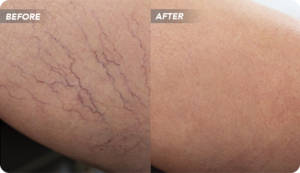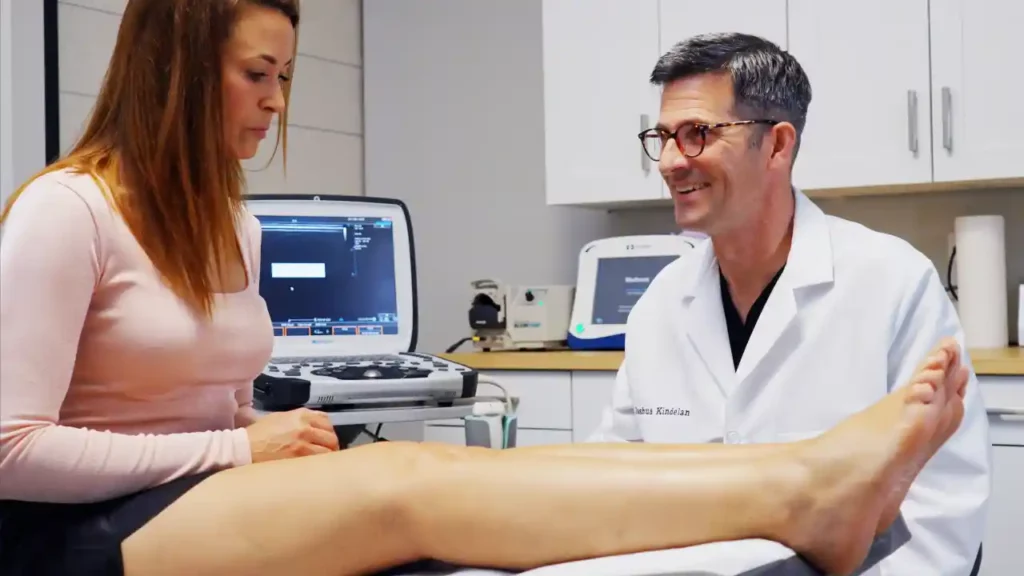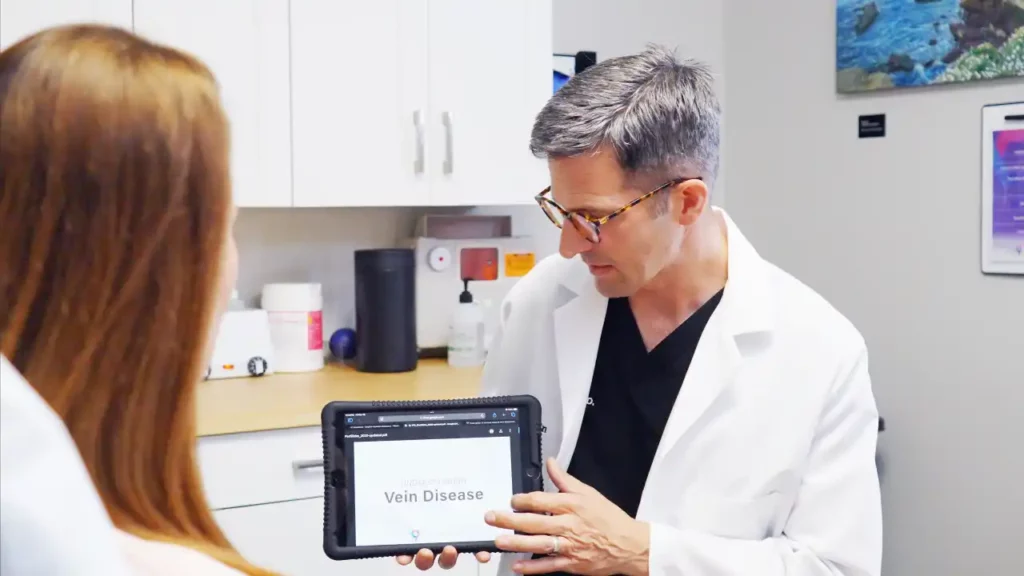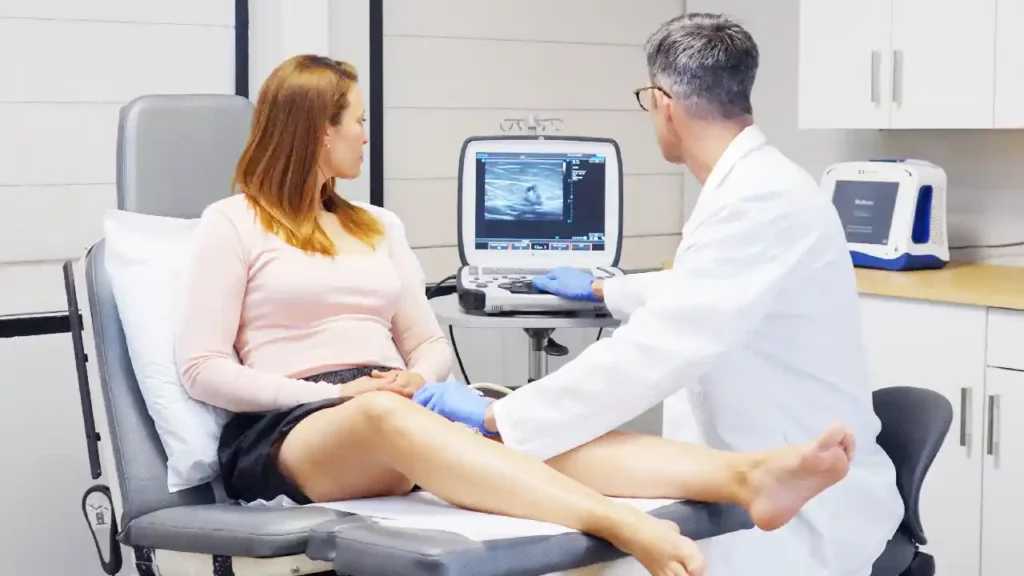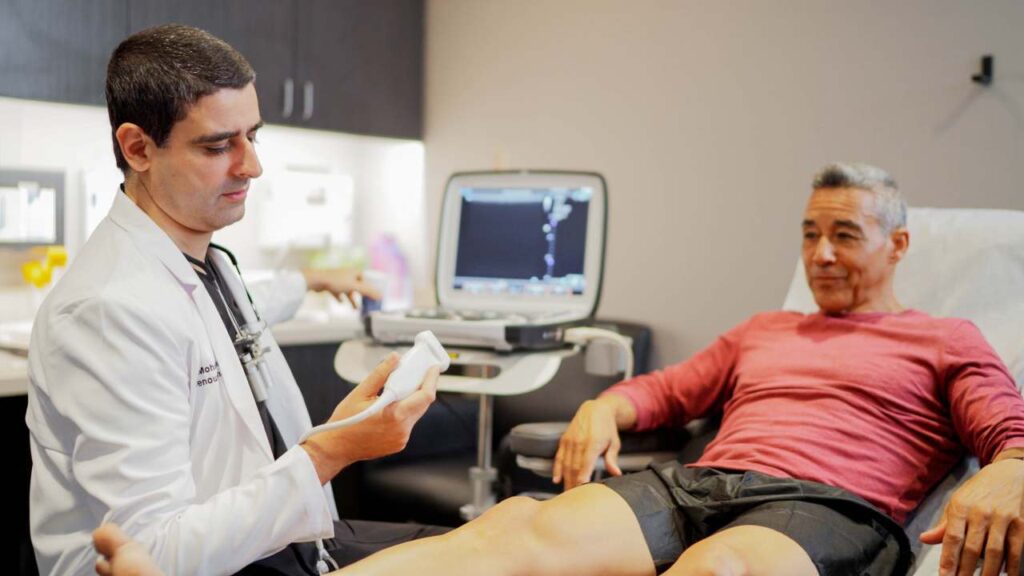Do spider veins come back after laser treatment?
Spider veins are dense clusters of reddish or bluish blood vessels visible just underneath the skin’s surface. They look like a mass of spider webs expanding outwards from a central location. Laser therapy is one of the most popular treatments for spider veins, generally offered as medical spas. That’s because laser therapy is a non-invasive treatment for spider veins, and it can be provided by healthcare professionals and nurse practitioners even without considerable experience.
Laser spider vein treatment is an extremely safe and simple procedure. It involves channeling laser energy into the spider veins using a specialized laser device. The laser energy is carefully calibrated to reach the spider veins. Over time, the laser energy destroys the spider veins, making them shrink and fade away from the skin’s surface. However, laser treatment for spider veins doesn’t address chronic venous insufficiency, the root cause of vein disease, so there’s a high risk of spider veins returning.
Why is laser spider vein treatment considered ineffective?
Laser spider vein treatment is considered ineffective because it only shrinks the visible spider veins from the skin’s surface. However, spider veins are often symptomatic of chronic venous insufficiency, a medical condition wherein your vein valves collapse and blood accumulates in leg veins, eventually leading to spider veins and varicose veins. Laser therapy only diminishes the visibility of spider veins (usually after multiple sessions), so there’s an extremely high risk of recurrence. Treating spider veins without addressing the underlying vein disease is like painting over a stained wall instead of fixing the leaky pipes underneath.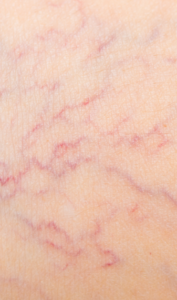
What is the ideal spider vein treatment?
Sclerotherapy is widely considered the best spider vein treatment. Sclerotherapy is a minimally invasive procedure wherein a medicine called a sclerosant is injected into the spider veins — one injection per spider vein. The sclerosant solution fuses the spider veins’ walls, turning them into hardened scar tissues eventually absorbed by the body. Sclerotherapy guarantees results — each injection successfully removes one spider vein, so you can be assured of optimal results in 2 to 3 sessions.
Furthermore, sclerotherapy is better than laser therapy because it’s provided by vein doctors (phlebologists) in dedicated vein treatment clinics. Unlike laser therapy, sclerotherapy can’t be performed by cosmetic providers or nurse practitioners. If you consult reliable vein doctors in California, they will also perform advanced vascular imaging tests to identify the root cause of spider veins and curate the ideal treatment plan to ensure long-lasting results without recurrence.
How long does spider vein treatment last?
Sclerotherapy spider vein treatment concludes within 30 minutes. The vein doctor applies topical anesthesia on the skin’s surface and injects sclerosant medicine into the spider veins. The number of injections depends on the number of spider veins, though they may split the entire treatment into two sessions. After the sclerotherapy injections, you can resume your daily activities without any downtime.
How long for spider veins to disappear after laser treatment?
Laser therapy produces extremely slow results. You may need 5+ sessions spaced a month apart each to see the results. Furthermore, your spider veins may return in a few months because laser therapy doesn’t address underlying chronic venous insufficiency. Sclerotherapy works a lot faster — the spider veins will gradually fade away from the skin’s surface as they’re absorbed by your body, which may take 2 to 3 weeks.
Can you get blisters after laser vein treatment?
You may notice skin blisters after laser vein treatment because of residual clots in blood vessels. However, this is temporary — the blisters will gradually dissipate.
Is there bruising after laser treatment for spider veins?
You may experience mild swelling and bruising after laser treatment for spider veins. The side effects may dissipate within 2 weeks, but you can resume your daily activities immediately.
Can varicose veins return after treatment?
Varicose veins can return after your vein treatment, but only if the vein doctor doesn’t address underlying chronic venous insufficiency. Varicose veins are also caused by underlying vein disease, so you must consult a vein doctor who performs thorough ultrasound diagnostic scans. The vein doctor should treat chronic venous insufficiency before removing the superficial varicose veins to ensure long-lasting results.
What are the best varicose vein treatments?
Radiofrequency ablation, endovenous laser ablation, and venaseal are some of the best minimally invasive treatments for chronic venous insufficiency. During these procedures, the vein doctor will use radiofrequency energy, laser energy, or medical-grade adhesives to close or destroy the diseased saphenous vein responsible for your vein problems, rerouting the accumulated blood into healthier leg veins. After the primary vein treatment, the vein doctor may provide ambulatory phlebectomy — they’ll remove superficial varicose veins through small incisions on the skin’s surface, thereby improving your cosmetic appearance.
What happens during the duplex ultrasound test?
Duplex ultrasound is the primary and most effective test for chronic venous insufficiency. During the ultrasound scan, the handheld device is moved over your legs to visualize the blood flow in your leg veins on a computer screen. The vein doctor will examine the screen to determine if you have chronic venous insufficiency.
What is the radiofrequency ablation for varicose veins success rate?
Radiofrequency ablation is one of the most popular and effective treatments for chronic venous insufficiency. During radiofrequency ablation, the vein doctor administers local anesthesia and makes a small incision on the skin’s surface. They insert a catheter through the incision and into the diseased vein. Once activated, the catheter generates radiofrequency energy to destroy the diseased vein, rerouting the accumulated blood into healthier leg veins. Radiofrequency ablation is completely safe and effective, with a success rate of 97%.

